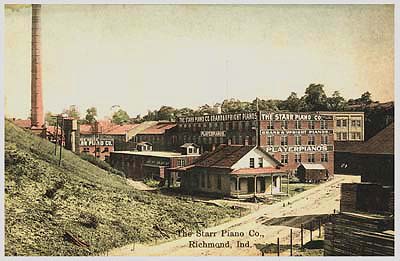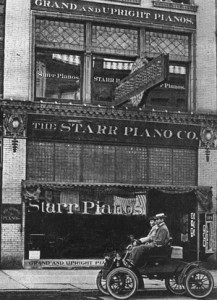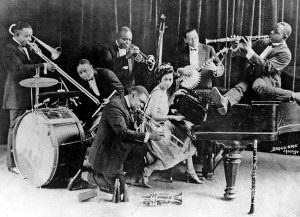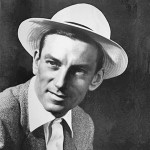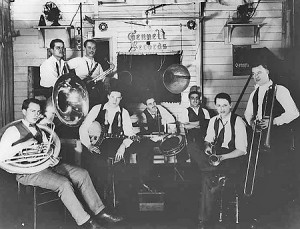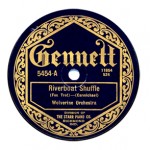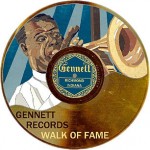Between 1922 and 1928, a ragtag recording studio in rural Richmond, Indiana became a focal point for a hot jazz revolution.
The Gennett studio was little more than a single story shed in back of a piano factory. Old rugs hung from the ceiling. Walls were stuffed with straw to dampen the racket made by passing locomotives.
But the little Gennett studio made jazz history. Perched on stools and packing crates, King Oliver, Jelly Roll Morton, The New Orleans Rhythm Kings, Bix Beiderbecke, and Hoagy Carmichael all made seminal recordings there.
The Starr Piano Company of Richmond was one of the nation's largest manufacturers of pianos in an era when the piano was the main source of family entertainment in middle-class American homes. Keeping up with the times, the Starr Piano showrooms offered phonograph players as well. In response to the growing demand for discs, the owners launched their own recording division under the Gennett label in 1915.
By 1920 the Starr Piano Company manufactured 15,000 pianos and pressed 3 million records each year. By the end of the decade Gennett had 25 labels in production, and railroad cars pulling up to the factory, hauled away crates of records for distribution around the world.
The content of the Gennett catalog ranged widely—from light-classical to sound effects and famous speeches, including the "Cross of Gold" speech by William Jennings Bryan. Discs by blues, gospel and old-time country artists, including Thomas A. Dorsey, Charley Patton and Gene Autrey helped shape American popular music.
In 1923 the runaway success of so-called "race records" by female blues artists inspired Gennett to sign King Oliver's Creole Jazz Band, performing nightly in nearby Chicago. Oliver's historic Gennett recordings were the first ever by an established black New Orleans jazz band. Eventually, Gennett led the industry in recording top black jazz instrumentalists.
The racial cross-pollination of jazz in Chicago and the Midwest was already well under way. Strains of the new music swirling around frat parties on college campuses and lakeside dance pavilions, was captured on hot wax at Gennett Records and pressed into recordings that inspired a generation to dance ‘til dawn. Hoagy Carmichael put it this way:
"In the farmland among the Indiana corn—and from the 'cow pasture universities'—there sprouted a beardless priesthood of jazz players and jazz composers. Instead of buttermilk, we were nurtured on bathtub gin and rhythm. It 'just happened'—like a thundercloud."
New Orleans jazz pioneer Jelly Roll Morton made the first interracial recording in American history at Gennett with fellow New Orleanians Paul Mares, George Brunies and Leon Roppolo of the New Orleans Rhythm Kings, an important white band on the Chicago scene. Morton would go on to create his first significant body of recorded work at Gennett, a series of solo piano sides.
Gennett documented the recording debut of Bix Beiderbecke and the Wolverine Orchestra in 1924. The photo above was taken at the session. Three months later, the Wolverines debuted a new tune composed for them by Hoagy Carmichael, "Riverboat Shuffle." The next year, Hoagy himself recorded his tunes "Washboard Blues" and "Boneyard Shuffle" at the Gennett studio.
Hoagy made the first recording of his song "Stardust"—one of the most popular in history—at the studio in 1927.
The Starr-Gennett Foundation unveiled a permanent Starr-Gennett themed attraction in Richmond in 2007. The Gennett Walk of Fame is located at the site of the Starr Piano Company, and is a series of cast-bronze markers in the form of 78 rpm phonograph records embedded in the Whitewater Gorge Trail.
Photo credit for Home Page: Gennett Records Cover courtesy waynenet.org.
Text base Riverwalk Jazz script by Margaret Pick ©2011


